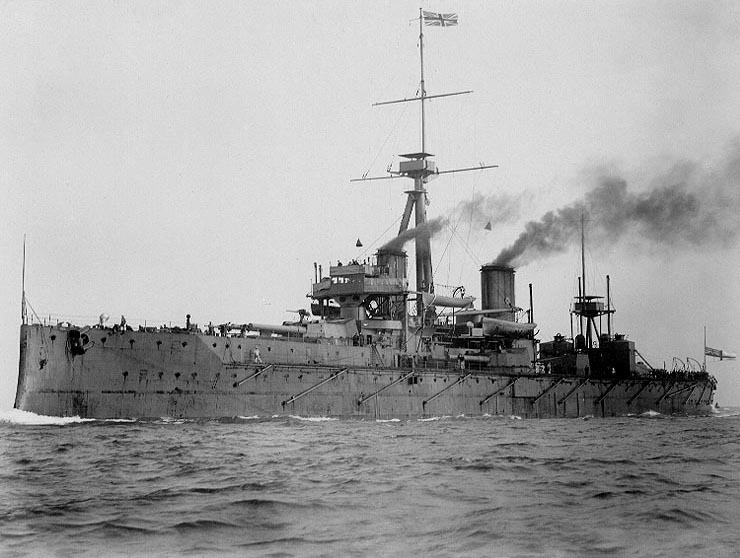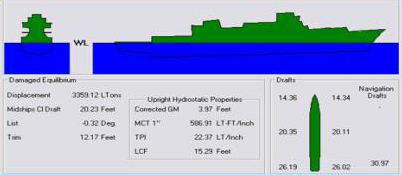|
Vulcano-class Logistic Support Ship
The ''Vulcano'' class is a class of replenishment oiler used by the Italian Navy, with lead ship ''Vulcano'' of the class entered service on 12 March 2021. The ships are designed to support fleet operations with fuel and dry stores and expected to replace the , another class of replenishment oiler from the Navy. ''Vulcano'' was financed under the 2014 Naval Law, for €346 million, then increased to €374.6 million, when the length was extended by . A second ship ''Atlante'' was ordered in January 2022 for projected delivery in 2025. The Navy also had an option for a third ship of the class. However, under the Italian MoD’s Multi-Year Defence Planning Document (Documento Programmatico Pluriennale della Difesa, DPP) for the 2023-2025 timeframe, a fourth ship was added to the program. The French Navy through OCCAR ordered three modified ships of the class to replace its s to be delivered in 2023, 2025 and 2027. A fourth ship to be ordered is projected for service entry after ... [...More Info...] [...Related Items...] OR: [Wikipedia] [Google] [Baidu] |
Fincantieri
Fincantieri S.p.A. () is an Italian shipbuilding company based in Trieste, Italy. Already the largest shipbuilder in Europe, after the acquisition of Vard in 2013, Fincantieri group doubled in size to become the fourth largest in the world (2014). The company builds both commercial and military vessels. The company is listed on the Borsa Italiana (Milan Stock Exchange) and is a component of FTSE Italia Mid Cap Index. Overview Fincantieri designs and builds merchant vessels, passenger ships, offshore, and naval vessels, and is also active in the conversion and ship repair sectors. The company also owned Grandi Motori Trieste, which constructed marine diesel engines, but this was sold to Wärtsilä in 1999. Founded in 1959 as Società Finanziaria Cantieri Navali – Fincantieri S.p.A. as a State financial holding company, part of Istituto per la Ricostruzione Industriale, IRI, the company became a separate entity in 1984. Fincantieri employs a staff of about 10,000 workers at e ... [...More Info...] [...Related Items...] OR: [Wikipedia] [Google] [Baidu] |
Hangar
A hangar is a building or structure designed to hold aircraft or spacecraft. Hangars are built of metal, wood, or concrete. The word ''hangar'' comes from Middle French ''hanghart'' ("enclosure near a house"), of Germanic origin, from Frankish *''haimgard'' ("home-enclosure", "fence around a group of houses"), from *''haim'' ("home, village, hamlet") and ''gard'' ("yard"). The term, ''gard'', comes from the Old Norse ''garðr'' ("enclosure, garden"). Hangars are used for protection from the weather, direct sunlight and for maintenance, repair, manufacture, assembly and storage of aircraft. History The Wright brothers stored and repaired their aircraft in a wooden hangar constructed in 1902 at Kill Devil Hills in North Carolina for their Glider aircraft, glider. After completing design and construction of the ''Wright Flyer'' in Ohio, the brothers returned to Kill Devil Hills only to find their hangar damaged. They repaired the structure and constructed a new workshop while t ... [...More Info...] [...Related Items...] OR: [Wikipedia] [Google] [Baidu] |
Jane's Information Group
Janes is a global open-source intelligence company specialising in military, national security, aerospace and transport topics, whose name derives from British author Fred T. Jane. History Jane's Information Group was founded in 1898 by Fred T. Jane, who had begun sketching ships as an enthusiast naval artist while living in Portsmouth. This gradually developed into an encyclopedic knowledge, culminating in the publishing of Jane's Fighting Ships, ''All the World's Fighting Ships'' (1898). The company then gradually branched out into other areas of military expertise. The books and trade magazines published by the company are often considered the ''de facto'' public source of information on warfare and transportation systems. Based in Greater London for most of its existence, the group was owned by the Thomson Corporation, the Woodbridge Company, then IHS Markit, before being acquired by Montagu Private Equity in 2019. In March 2022, Janes acquired Washington, D.C.-based RWR Ad ... [...More Info...] [...Related Items...] OR: [Wikipedia] [Google] [Baidu] |
Bow (ship)
The bow () is the forward part of the hull of a ship or boat, the point that is usually most forward when the vessel is underway. The aft end of the boat is the stern. Prow may be used as a synonym for bow or it may mean the forward-most part of the bow above the waterline. Function A ship's bow should be designed to enable the hull to pass efficiently through the water. Bow shapes vary according to the speed of the boat, the seas or waterways being navigated, and the vessel's function. Where sea conditions are likely to promote pitching, it is useful if the bow provides reserve buoyancy; a flared bow (a raked stem with flared topsides) is ideal to reduce the amount of water shipped over the bow. Ideally, the bow should reduce the resistance and should be tall enough to prevent water from regularly washing over the top of it. Large commercial barges on inland waterways rarely meet big waves and may have remarkably little freeboard at the bow, whereas fast military ... [...More Info...] [...Related Items...] OR: [Wikipedia] [Google] [Baidu] |
Stern (ship)
The stern is the back or aft-most part of a ship or boat, technically defined as the area built up over the sternpost, extending upwards from the counter rail to the taffrail. The stern lies opposite the bow, the foremost part of a ship. Originally, the term only referred to the aft port section of the ship, but eventually came to refer to the entire back of a vessel. The stern end of a ship is indicated with a white navigation light at night. Sterns on European and American wooden sailing ships began with two principal forms: the ''square'' or ''transom'' stern and the ''elliptical'', ''fantail'', or ''merchant'' stern, and were developed in that order. The hull sections of a sailing ship located before the stern were composed of a series of U-shaped rib-like frames set in a sloped or "cant" arrangement, with the last frame before the stern being called the ''fashion timber(s)'' or ''fashion piece(s)'', so called for "fashioning" the after part of the ship. This frame is ... [...More Info...] [...Related Items...] OR: [Wikipedia] [Google] [Baidu] |
Aviation Fuel
Aviation fuels are either petroleum-based or blends of petroleum and synthetic fuels, used to power aircraft. They have more stringent requirements than fuels used for ground applications, such as heating and road transport, and they contain additives to enhance or preserve properties important to fuel performance and handling. They are kerosene-based fuels (such as JP-8 and Jet A-1) used in gas-turbine-powered aircraft. Piston-engined aircraft use leaded gasoline, while those with diesel engines may use jet fuel (kerosene). By 2012, all U.S. Air Force aircraft had been certified to use a 50-50 blend of kerosene and synthetic fuel derived from coal or natural gas, in an effort to stabilize fuel costs. Types of aviation fuel Conventional aviation fuels Jet fuel Jet fuel is a clear to straw-colored fuel, based on either an unleaded kerosene (Jet A-1), or a naphtha–kerosene blend (Jet B). Similar to diesel fuel, it can be used in either Diesel engine, compression ignition ... [...More Info...] [...Related Items...] OR: [Wikipedia] [Google] [Baidu] |
Displacement (ship)
The displacement or displacement tonnage of a ship is its weight. As the term indicates, it is measured indirectly, using Archimedes' principle, by first calculating the volume of water displaced by the ship, then converting that value into weight. Traditionally, various measurement rules have been in use, giving various measures in long tons. Today, tonnes are more commonly used. Ship displacement varies by a vessel's degree of load, from its empty weight as designed (known as "lightweight tonnage") to its maximum load. Numerous specific terms are used to describe varying levels of load and trim, detailed below. Ship displacement should not be confused with measurements of volume or capacity typically used for commercial vessels and measured by tonnage: net tonnage and gross tonnage. Calculation The process of determining a vessel's displacement begins with measuring its draft.George, 2005. p. 5. This is accomplished by means of its "draft marks". A merchant vessel has t ... [...More Info...] [...Related Items...] OR: [Wikipedia] [Google] [Baidu] |
OCCAR
The Organisation for Joint Armament Cooperation (French: ''Organisation Conjointe de Coopération en matière d'ARmement''; OCCAR) is a European intergovernmental organisation that facilitates and manages collaborative armament programmes through their lifecycle between the governments of Belgium, France, Germany, Italy, Spain, and the United Kingdom. History ImageSize = width:280 height:270 PlotArea = left:50 right:0 bottom:10 top:10 DateFormat = yyyy Period = from:1993 till:2005 TimeAxis = orientation:vertical ScaleMajor = unit:year increment:1 start:1993 ScaleMinor = unit:year increment:5 start:1993 PlotData= Color:yellow mark:(line,black) align:left fontsize:M shift:(0,-3) # shift text to right side of bar # there is no automatic collision detection, fontsize:XS # so shift texts up or down manually to avoid overlap shift:(25,-10) at:2005 shift:15,-6 text: Accession of Spain at:2004 shift:15,-6 text: Re-organisation of Central Office at:2003 shi ... [...More Info...] [...Related Items...] OR: [Wikipedia] [Google] [Baidu] |
Euro
The euro (currency symbol, symbol: euro sign, €; ISO 4217, currency code: EUR) is the official currency of 20 of the Member state of the European Union, member states of the European Union. This group of states is officially known as the euro area or, more commonly, the eurozone. The euro is divided into 100 1 euro cent coin, euro cents. The currency is also used officially by the institutions of the European Union, by International status and usage of the euro, four European microstates that are not EU members, the British Overseas Territory of Akrotiri and Dhekelia, as well as unilaterally by Montenegro and Kosovo. Outside Europe, a number of special territories of EU members also use the euro as their currency. The euro is used by 350 million people in Europe and additionally, over 200 million people worldwide use currencies pegged to the euro. It is the second-largest reserve currency as well as the second-most traded currency in the world after the United Sta ... [...More Info...] [...Related Items...] OR: [Wikipedia] [Google] [Baidu] |
Lead Ship
The lead ship, name ship, or class leader is the first of a series or class of ships that are all constructed according to the same general design. The term is applicable to naval ships and large civilian vessels. Large ships are very complex and may take five to ten years to build. Improvements based on experience with building and operating the lead ship are likely to be incorporated into the design or construction of later ships in the class, so it is rare to have vessels that are identical. The second and later ships are often started before the first one is completed, launched and tested. Nevertheless, building copies is still more efficient and cost effective than building prototypes, and the lead ship will usually be followed by copies with some improvements rather than radically different versions. The improvements will sometimes be retrofitted to the lead ship. Occasionally, the lead ship will be launched and commissioned for shakedown testing before following ship ... [...More Info...] [...Related Items...] OR: [Wikipedia] [Google] [Baidu] |
Replenishment Oiler
A replenishment oiler or replenishment tanker is a naval auxiliary ship with fuel tanks and dry cargo holds which can supply both fuel and dry stores during underway replenishment (UNREP) at sea. Many countries have used replenishment oilers. The US Navy hull classification symbol, United States Navy's hull classification symbol for this type of ship was 'AOR' (Auxiliary Oil Replenishment). Replenishment oilers are slower and carry fewer dry stores than the US Navy's modern fast combat support ships, which carry the classification 'AOE'. In 2020 the US Navy began to develop a new type of ship, the 'AOL' or List of United States Navy oilers#Light Replenishment Oilers (T-AOL), light replenishment oiler; construction of the first is planned for 2026. History The development of the "oiler" paralleled the change from coal- to oil-fired boilers in warships. Prior to the adoption of oil fired machinery, navies could extend the range of their ships either by maintaining coaling stations ... [...More Info...] [...Related Items...] OR: [Wikipedia] [Google] [Baidu] |
Underway Replenishment
Underway replenishment (UNREP) (United States Navy, U.S. Navy) or replenishment at sea (RAS) (North Atlantic Treaty Organization/Commonwealth of Nations) is a method of transferring fuel, munitions, and stores from one ship to another while under way. First developed in the early 20th century, it was used extensively by the United States Navy as a logistics support technique in the Pacific theatre of World War II, permitting U.S. carrier task forces to remain at sea indefinitely. History Concept Prior to underway replenishment, coaling stations were the only way to refuel ships far from home. The Royal Navy had an unparalleled global logistics network of coaling stations and the world's largest collier (ship), collier fleet. This capability allowed the Navy to power projection, project naval power around the world and far from home ports. This had two disadvantages: the infrastructure was vulnerable to disruption or attack, and its use introduced a predictable pattern to naval ... [...More Info...] [...Related Items...] OR: [Wikipedia] [Google] [Baidu] |







